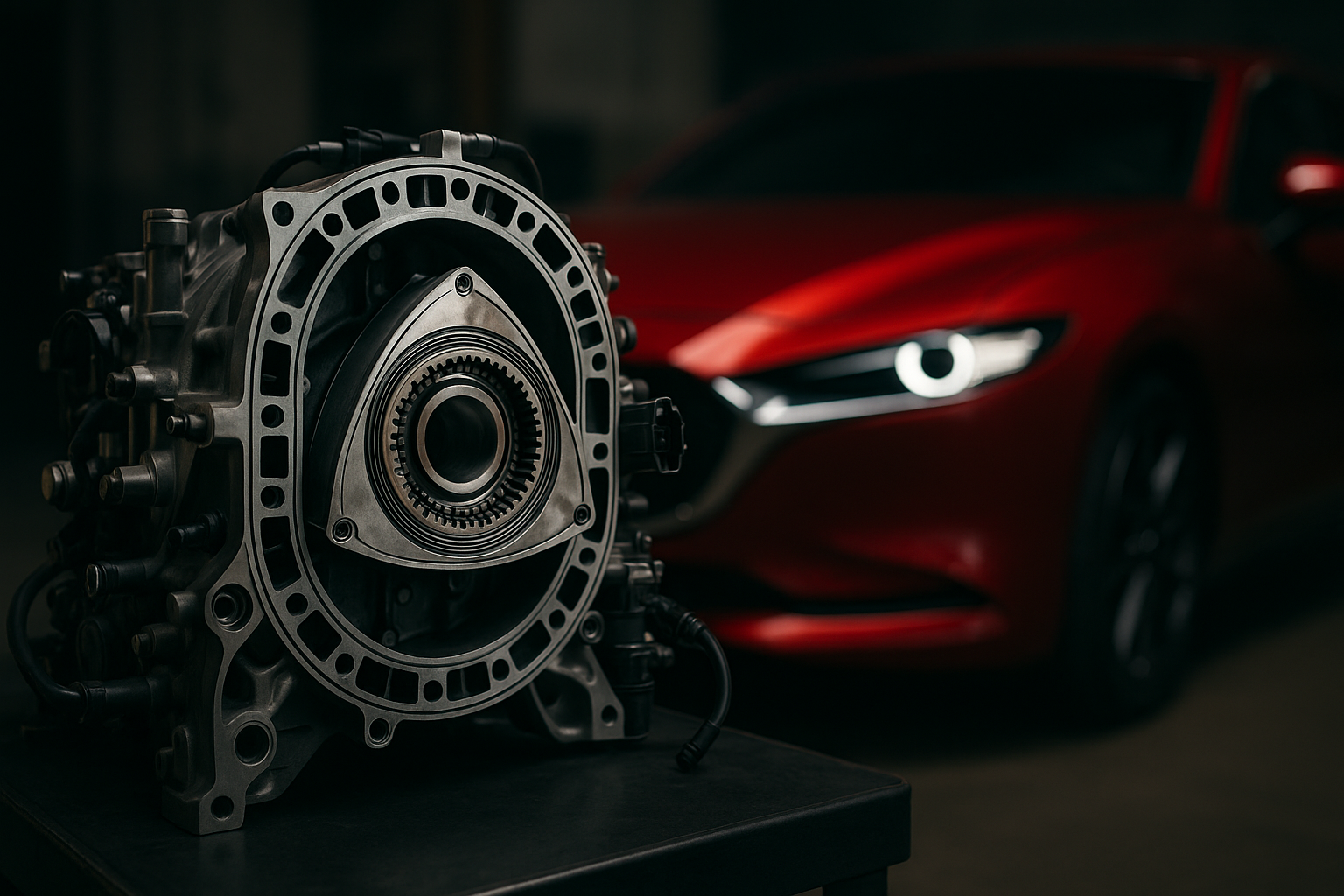The Resurgence of Rotary Engines in Modern Sports Cars
Imagine the high-pitched whine of a compact, lightweight engine spinning at 9,000 RPM, delivering smooth power and incredible performance. This isn't science fiction; it's the rotary engine, a once-forgotten technology making a surprising comeback in the world of high-performance sports cars. As automakers seek innovative solutions to meet stringent emissions standards while still delivering thrilling driving experiences, the rotary engine is emerging as an unexpected hero.

However, rotary engines faced significant challenges. They consumed more fuel, produced higher emissions, and suffered from reliability issues due to apex seal wear. These drawbacks led to their decline, with Mazda discontinuing its last rotary-powered car in 2012. Many believed this marked the end of the rotary era.
The Unexpected Revival
Against all odds, rotary engines are experiencing a renaissance. Advancements in materials science, computer-aided design, and fuel injection technology have addressed many of the rotary’s historical shortcomings. Modern rotary engines boast improved fuel efficiency, reduced emissions, and enhanced durability, making them viable options for high-performance applications once again.
Several factors are driving this resurgence. First, the compact size and lightweight nature of rotary engines make them ideal for sports cars, where power-to-weight ratio is crucial. Second, their smooth power delivery and high-revving characteristics align perfectly with the demands of performance enthusiasts. Lastly, the unique sound and heritage associated with rotary engines provide a distinctive selling point in an increasingly homogenized market.
Technological Advancements Fueling the Comeback
The modern rotary engine bears little resemblance to its predecessors under the hood. Advanced computer modeling has optimized the rotor and housing shapes, significantly improving combustion efficiency. New apex seal materials, such as ceramic-based composites, offer vastly improved durability and reduced friction.
Direct fuel injection systems, precisely controlled by sophisticated engine management computers, have dramatically improved fuel economy and reduced emissions. Some manufacturers are even experimenting with hydrogen fuel in rotary engines, leveraging the design’s inherent flexibility in fuel type to create ultra-clean powerplants.
Turbocharging and hybrid systems are also being integrated with rotary engines, boosting power output while further improving efficiency. These hybrid rotary setups can provide instant torque at low speeds, complementing the high-rev power delivery characteristic of rotary engines.
Manufacturers Leading the Charge
While Mazda remains the most well-known proponent of rotary technology, other manufacturers are now entering the fray. Boutique sports car makers, in particular, are embracing the rotary engine’s unique attributes to create distinctive, high-performance vehicles that stand out in a crowded market.
One such company is Apex Motors, a British startup that has developed a lightweight track car powered by a modern twin-rotor engine. The Apex AP-0 boasts impressive performance figures, with a 0-60 mph time under 3 seconds and a top speed over 190 mph, all while meeting current emissions standards.
In Japan, Mazda has hinted at a potential return to rotary power in its sports car lineup, with concept vehicles showcasing advanced rotary hybrid powertrains. These concepts combine the best attributes of electric motors and rotary engines, promising exhilarating performance with improved efficiency.
Challenges and Future Prospects
Despite the promising advancements, rotary engines still face hurdles. Meeting ever-tightening emissions regulations remains a challenge, particularly in markets with strict standards. The cost of developing and producing these specialized engines also presents a barrier, especially for smaller manufacturers.
However, the unique characteristics of rotary engines may find applications beyond traditional sports cars. Their compact size and smooth operation make them well-suited for range extenders in electric vehicles or as generators in hybrid powertrains. This versatility could secure the rotary engine’s place in the automotive landscape for years to come.
The Enthusiast’s Perspective
For car enthusiasts, the return of the rotary engine represents more than just a technological curiosity. It symbolizes a commitment to diversity and innovation in an industry often criticized for becoming too homogeneous. The distinctive sound, feel, and character of a rotary-powered sports car offer a driving experience unlike any other, appealing to those who seek something truly special in their automotive pursuits.
As manufacturers continue to refine and develop rotary technology, we can expect to see more high-performance vehicles embracing this unique powerplant. Whether as a primary engine or part of a hybrid system, the rotary engine’s resurgence adds an exciting chapter to the ongoing story of automotive innovation.
The rotary engine’s comeback is a testament to the enduring appeal of unconventional thinking in automotive design. As we look to the future, it’s clear that there’s still room for ingenuity and passion in the world of high-performance cars. The whine of a rotary engine may once again become a familiar sound on racetracks and winding roads, delighting enthusiasts and pushing the boundaries of what’s possible in automotive engineering.




